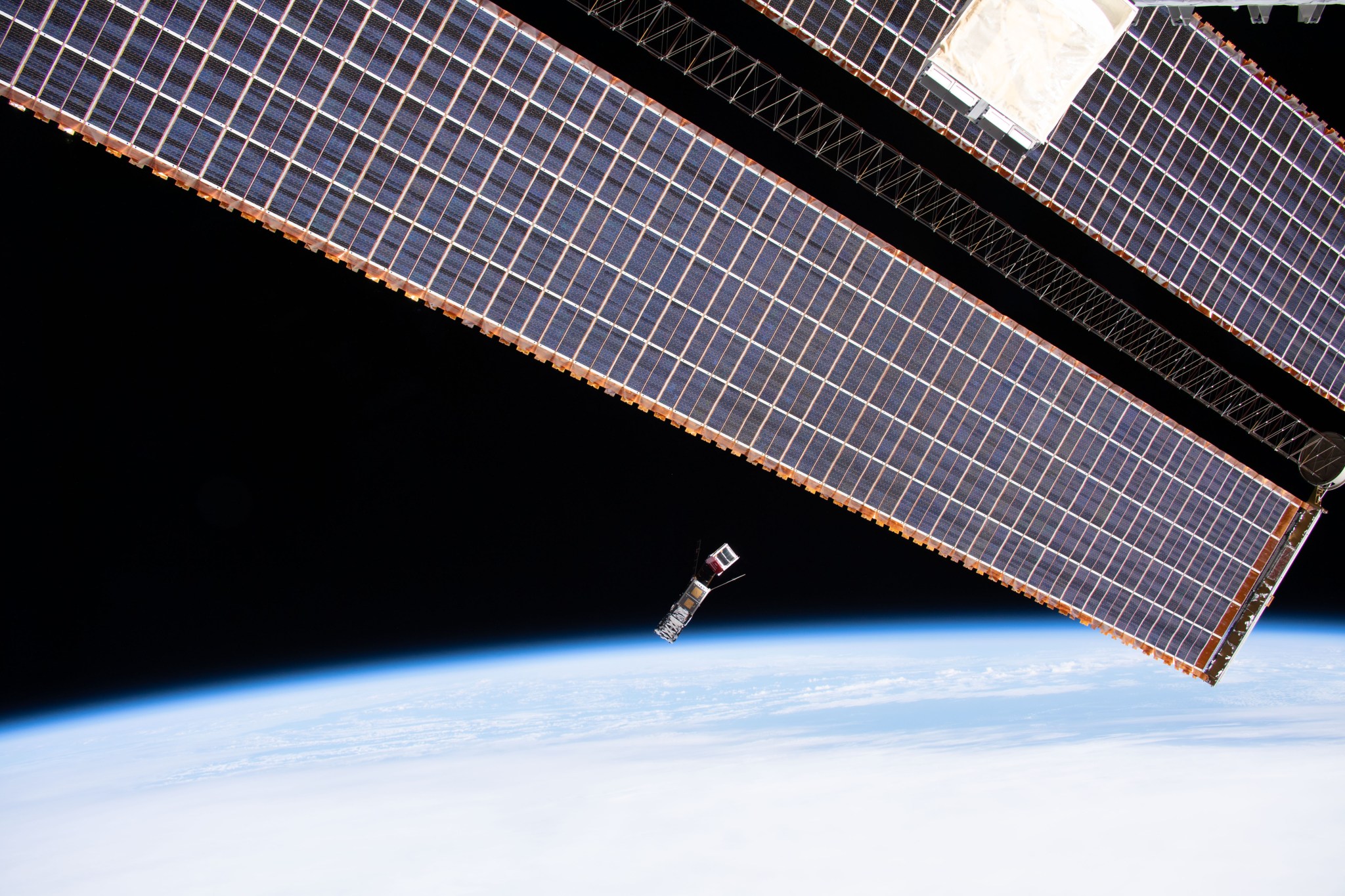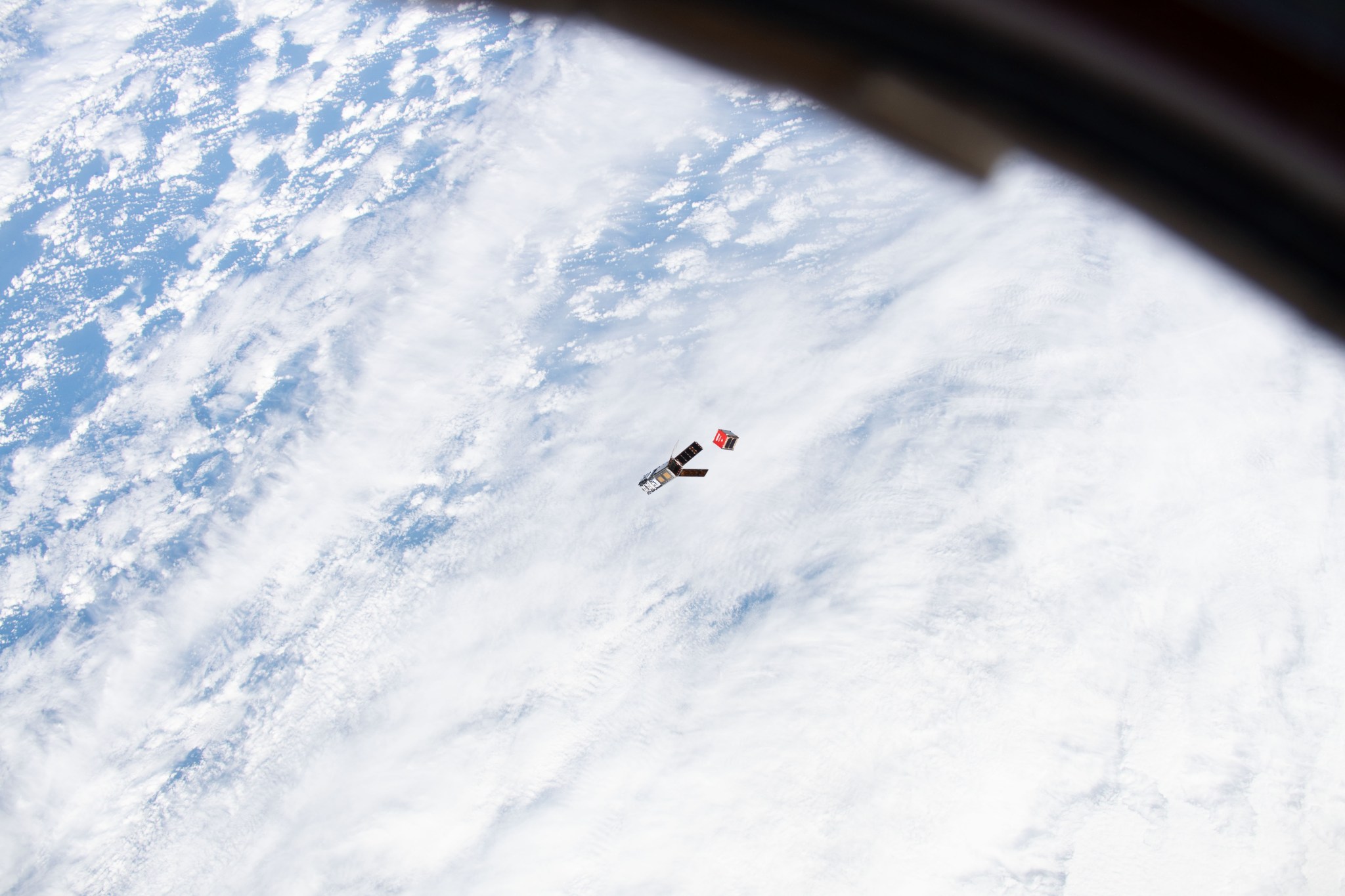[Lea la versión en español de esta historia]
The launch of one very small spacecraft marks a big success for the first collaboration between NASA and the Mexican Space Agency on a spaceflight project. It’s also important for the team of students in Mexico who designed and built the satellite. Called AzTechSat-1, it will demonstrate satellite-to-satellite communications for applications in space and on Earth. Specifically, it will “talk to” a network of telecommunications satellites already orbiting the Earth and contribute new data about this transmission strategy to developers of small satellites called CubeSats.
CubeSats are often built from commercial, off-the-shelf components and are a cost-effective way to conduct research in support of NASA’s plans for human exploration, from the basics of biology in microgravity to technology development for space missions. As future CubeSat experiments might do, AzTechSat-1 will send data to Globalstar, a constellation of satellites used for certain phone and low-speed data communications. This type of solution using existing infrastructure would allow researchers to download their data 24 hours a day, rather than just two or three times daily when the CubeSat itself passes overhead. This could help deliver more data overall and potentially even reduce the costs associated with staffing ground stations to communicate with small satellite missions.
The AzTechSat-1 mission is led by the Universidad Popular Autónoma del Estado de Puebla, or UPAEP, in Puebla, Mexico. It is providing students and professors an opportunity to lead and participate in their first spaceflight mission. The multidisciplinary team of students at UPAEP was mentored by engineers and project managers at NASA’s Ames Research Center in California’s Silicon Valley. They learned to use NASA methodologies for spaceflight project management and systems engineering. The students designed, built, tested and delivered a flight-certified CubeSat.
Small satellites, including CubeSats, are playing an increasingly large role in exploration, technology demonstration, scientific research and educational investigations at NASA, including: planetary space exploration; Earth observations; fundamental Earth and space science; and developing precursor science instruments like cutting-edge laser communications, satellite-to-satellite communications and autonomous movement capabilities.
AzTechSat-1 was launched on Dec. 5, 2019, aboard the 19th SpaceX Commercial Resupply Services contract mission for NASA and delivered to the International Space Station. AzTechSat-1 will be deployed from the space station Feb. 17, 2020, to begin its mission operations. It will be the first satellite designed and built by students in Mexico that is deployed from the International Space Station. It will also be Mexico’s second small satellite since 1995.
AzTechSat-1 may be a small cube just four inches per side, but the mission represents a bright future for space professionals in Mexico.
Milestones:
- Dec. 5, 2019: AzTechSat-1 launches to the International Space Station aboard the 19th SpaceX Commercial Resupply Services contract mission for NASA.
- Feb. 19, 2020: AzTechSat-1 deploys from the space station via the NanoRacks CubeSat Deployer, and mission operations begin.
- June 15, 2020 [scheduled]: Mission operations end.
- Aug. 10, 2020 [scheduled]: Project report and project closure.
Learn more:
Mexican Students Launch a Small Satellite to the International Space Station (NASA story, Dec. 2019)
NASA’s CubeSat Launch Initiative
For researchers:
AzTechSat-1 – International Space Station technical experiment page
For news media:
Members of the news media interested in covering this topic should reach out to the NASA Ames newsroom.






























